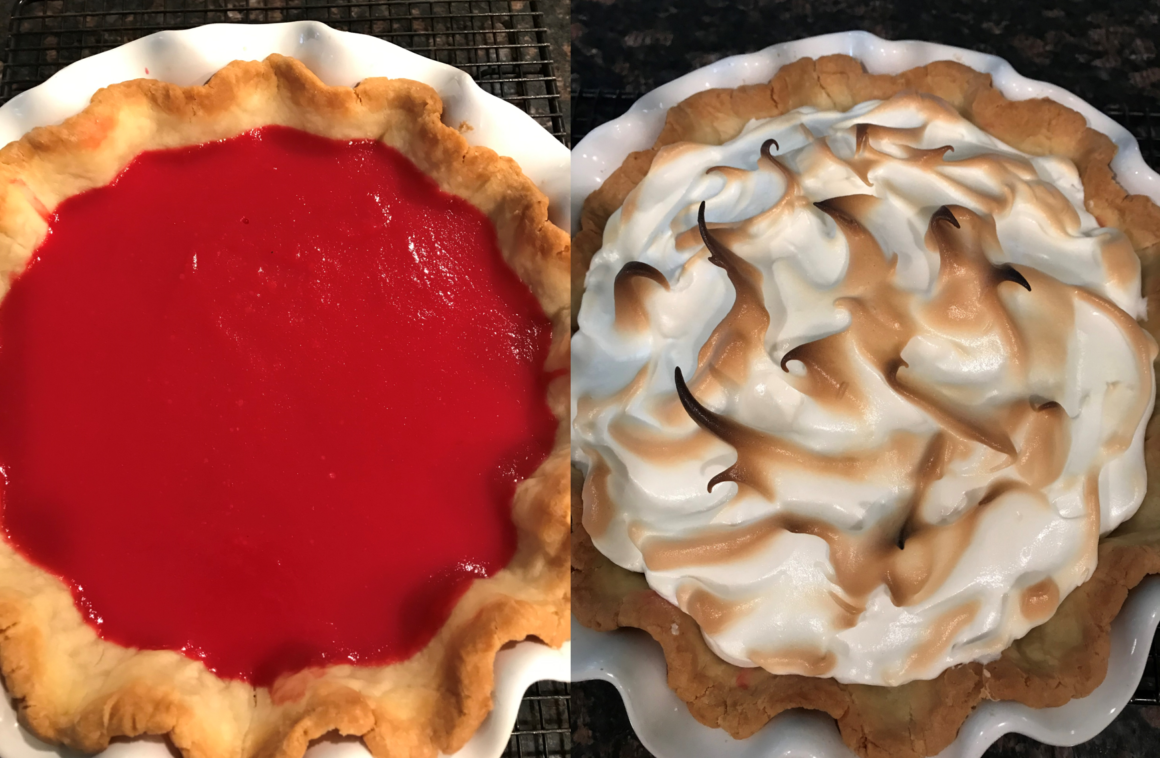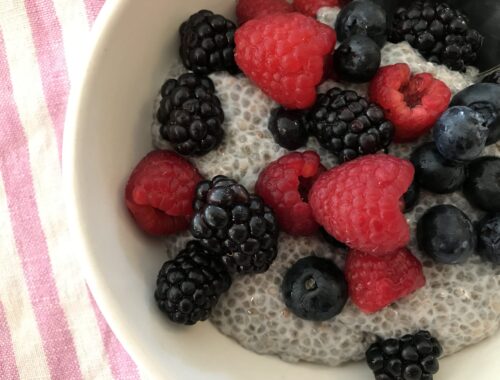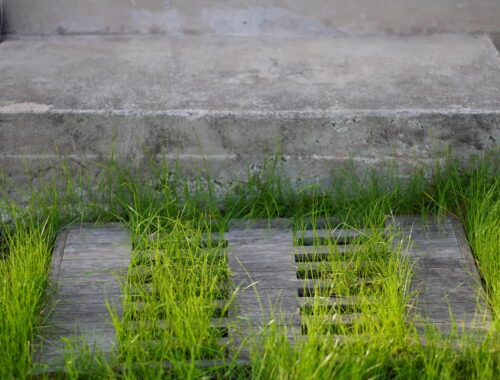
“Why shouldn’t they have it, if they want it?!”
Three beloved women spoke to me today of needing to follow last week’s Thanksgiving (over) indulgences and holiday sugar storm fronts with this week’s taking themselves in hand—intermittent fasting came up, bone broth, scales. What delighted me most was what one friend said: “I’m on a diet—but only in my mind.” Maybe it’s my kapha dosha, maybe it’s my nurturing nature, or maybe it’s my hibernating, sweatering, snacking tendency at the first gust of cold, but I’m probably the worst person from whom to seek support for cutting back on calories at the beginning of winter and during the holidays. I’m likely to do something like offer you a cafe au lait bowl of homemade hot chocolate with freshly whipped cream and a sprinkle of peppermint snow—or five-spice powder, your preference—so we could sit down together and talk seriously about your belt-tightening intentions. I’m not a saboteur of progress, and I’m (usually) all about healthy eating, but the dark, icy season intersected by celebrations of light calls for adaptive measures.
Knowing this about me, you have fair warning for today’s share: This recipe I made for our Thanksgiving feast, which provided a hit of brightness in color and flavor among all the brown (and sometimes green) umami of the traditional meal. It was fun to cook the custard—cranberries pop! magenta is my favorite color!—and assemble the pie; when I try the recipe again (soon), I’m going to experiment with cooking just the custard in individual ramekins, then topping each with the meringue—a sort of cranberry lemon firm pudding, a cloud of white on magenta tang—eliminating the extra tedious steps and distracting texture of the crust making, baking, and eating scenario. Maybe you’re going to stick to your bone broths and broccoli for a bit longer; maybe it’s just about time to treat yourself and your people again; either way, I’m wishing you the nourishment you most need right now.
Adapted from the New York Times’ recipe for Cranberry Lemon Meringue Pie
By Genevieve Ko
1 disk all-butter pie crust (I made a gluten-free crust, for our family’s needs)
All-purpose flour (or GF, as needed), for rolling
1 cup/211 grams granulated sugar
¼ teaspoon fine sea salt
2 medium lemons (I used Meyer lemons)
3 cups/343 grams fresh or frozen cranberries (I used fresh)
2 packed Tablespoons cornstarch
4 large eggs, carefully separated
3 Tablespoons/42 grams cold unsalted butter
¼ teaspoon cream of tartar
½ cup/70 grams confectioners’ sugar
Step 1 (I consider this level of necessary care to fall into the “tedious” category…)
If the dough has been refrigerated for more than an hour, let sit at room temperature for 10 minutes. On a lightly floured surface, use a lightly floured rolling pin to roll the dough into a 12½-inch round. Roll the dough up onto the pin, then unroll it over a standard (not deep-dish) 9-inch pie plate, centering it. Gently tuck and press it into the bottom and sides of the plate without stretching the dough. Fold the overhang of the dough under itself along the rim so that the dough is flush with the edge of the plate. If you’d like (I did), crimp the edges of the dough.
Step 2
If the dough has softened, refrigerate or freeze it until firm, about 30 minutes in the refrigerator or 10 minutes in the freezer. While the dough chills, position a rack in the lowest position in the oven and heat to 375 degrees.
Step 3
Use a fork to poke holes all over the bottom of the dough without piercing all the way through, if possible. Line the dough with a sheet of crumpled parchment paper. (Crumpling helps it lie flat against the dough.) Fill the lined dough to the top with pie weights, such as dried beans. (I use and re-use white rice dedicated to this purpose.)
Step 4
Bake on the bottom rack until the edges are light golden brown, the sides look dry and the bottom looks almost dry, 25 to 30 minutes. Remove the pie weights with the parchment and return the empty shell to the bottom rack. Bake until the bottom is golden, 5 to 10 minutes. Cool on a rack.
Step 5
Place the sugar and salt in a large saucepan and zest the lemons directly over it. Gently rub the zest into the sugar. Into a small bowl, squeeze a scant ½ cup juice from the lemons; set aside. Add the cranberries and 1¼ cups water to the saucepan, and bring to a boil over medium heat, stirring to dissolve the sugar. Boil until all of the cranberries have popped and collapsed and the liquid is red, syrupy and filled with cranberry seeds, 8 to 10 minutes.
Step 6
Pour the cranberry mixture through a sieve, pressing on the berries to extract all of their juice and scraping everything off the underside of the sieve. (This takes longer than I would have thought. There’s a lot of pressing and scraping involved. You should have 2 cups; discard the solids inside the sieve.) Add the cornstarch to the empty saucepan (no need to wash) and whisk in 2 tablespoons cold water until smooth. Add the egg yolks and whisk until smooth, then use a spatula to stir in the strained cranberry mixture.
Step 7
Bring to a boil over medium heat, stirring continuously, then continue to boil while stirring until very thick, 3 to 5 minutes. The mixture should be boiling hard with big bubbles. Turn off the heat, and stir in the cold butter and reserved lemon juice until the butter melts.
Step 8
Important step if you’re not perfect at creating a custard without a few tiny bits of cooked eggs in it (which I am definitely not): Pour the mixture into the cooked, cooled pie shell THROUGH THE SIEVE AGAIN, in order to strain out any egg lumps, and spread the custard evenly within the pie shell. (At this point, the pie can be cooled completely, covered and refrigerated for up to 3 days. Bring back to room temperature before topping with the meringue. I worked only one day in advance, so I can’t say how a three-day old pie crust with filling would hold up. I don’t think my household has ever had a fully homemade pie last three days, either in prepped or leftover form.)
Step 9
Whisk the egg whites in a completely clean bowl and with a completely clean whisk (any fat on either will keep the egg whites from setting up) with an electric hand or stand mixer on medium-high speed until foamy on top. Add the cream of tartar and continue whisking until soft peaks form. When you lift the whisk from the mixture, the top will droop back down. Add the confectioners’ sugar, sifting it into the bowl. Whisk on medium-high speed until stiff, glossy peaks form. When you lift the whisk from the mixture, the top should stand up and just the tip will have a curlicue.
Step 10
Spread the meringue over the crust, creating a pattern of decorative peaks and valleys. Use a kitchen blowtorch to brown the meringue all over or bake at 375 degrees until golden brown, about 10 minutes. Cool and serve the pie at room temperature.




